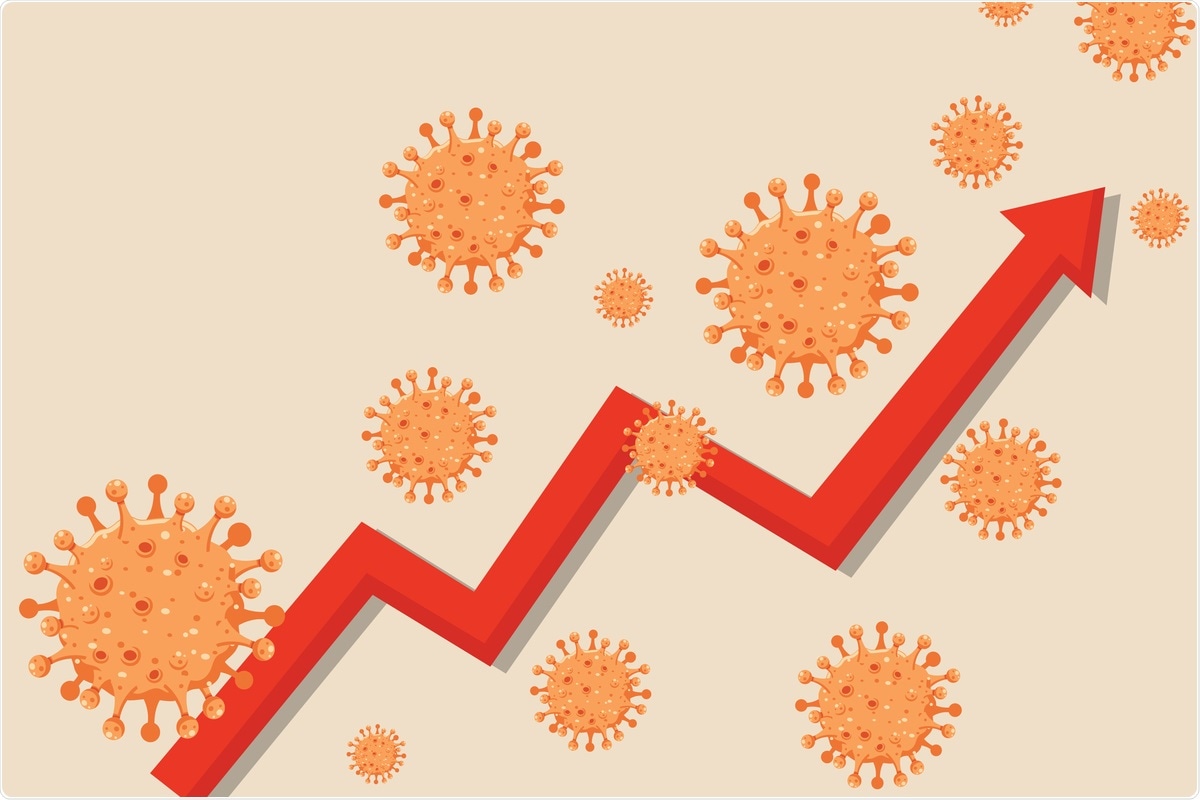Scientists from Imperial College London and the University of Cambridge, UK, have recently proposed and applied a correction to EpiEstim, a statistical method to estimate the time-dependent transmission of infectious disease during an epidemic. Applying the corrected method to simulated and real-world data has improved and more accurate estimation of severe acute respiratory syndrome coronavirus 2 (SARS-CoV-2) transmissibility. The study is currently available on the medRxiv* preprint server.
 Study: Refining reproduction number estimates to account for unobserved generations of infection in emerging epidemics. Image Credit: Eakdesign/ Shutterstock
Study: Refining reproduction number estimates to account for unobserved generations of infection in emerging epidemics. Image Credit: Eakdesign/ Shutterstock
Background
The coronavirus disease 2019 (COVID-19) pandemic caused by SARS-CoV-2 has caused tremendous damage to many countries' economic and healthcare systems across the globe. The emergence of novel viral variants with higher transmissibility and virulence has resulted in a continuous and sharp rise in new infections globally.
Basic and effective reproduction numbers are vital epidemiological parameters required to estimate the final epidemic size and herd immunity threshold and predict the future infection rate, hospitalization, and mortality. The basic reproduction number represents the average number of secondary infections caused by a single primary infection in a population where everyone is susceptible to the infectious disease. The effective reproduction number represents the average number of secondary infections from a primary infection at a given time in a population of both susceptible and non-susceptible people.
EpiEstim is considered the best method to estimate basic and effective reproduction numbers. However, it often suffers from the systematic overestimation of the basic reproduction number in the initial epidemic phases.
The study
The scientists considered a linear, exponential growth model to assess undetected early generations of infections and applied this correction to EpiEstim. They tested the efficacy of the corrected method using simulated data. Moreover, they used real-world COVID-19 data from the USA and Europe to compare the efficacy of original and corrected EpiEstim methods in estimating basic and effective reproduction numbers.
They specifically focused on the situations where early generations of infections may have been missed due to low testing rates and other pandemic-related emergencies. They considered the best components of the EpiEstim method and corrected its initial bias by utilizing a linear, exponential growth method.
In this method, the exponential growth rate of new infections is used to estimate the basic reproduction number if the generation interval is known. The generation interval represents the average time period taken by a primary infection case to infect and induce a secondary infection case.
The main aim of the corrected method was to include all early infections that remained asymptomatic or took longer than the usual time period to develop symptoms.
Important observations
Considering a reporting rate of 50%, the proposed correction caused a significant reduction in initial bias observed in the data generated by the original EpiEstim method. The mean estimates produced by the corrected method were comparable to those produced by the exponential growth method. A similar trend was observed by considering different reporting rates.
Further analysis with simulated data indicated that the corrected method generates more accurate estimates of basic reproduction numbers than the original method. Moreover, it improves the uncertainty quantification. However, the corrected method did not modify the later estimates of effective reproduction numbers generated by the original EpiEstim method.
Impact of undetected infections
The scientists investigated the impact of missed generations of infections on the estimates produced by the original and corrected EpiEstim methods. The findings revealed that the correction is particularly effective when a large number of initial generations remain undetected. Considering a situation where two generations of infections were missed, the corrected method produced an accurate basic production number and sufficiently compensated the bias of the original EpiEstim method.
Application of corrected EpiEstim method
The scientists applied the corrected method to real-world COVID-19 incidence data obtained from the US and some European countries. The findings revealed that in each country, the initial basic reproduction rate produced by the corrected method is lower than that produced by the original EpiEstim method. This indicates that missed generations of infections at initial pandemic phases can result in overestimating the basic reproduction number of SARS-CoV-2, which can influence the initial estimates of effective reproduction number.
Study significance
The study proposes a corrected EpiEstim method to more accurately estimate the early basic and effective reproduction numbers of SARS-CoV-2. The correction applied to the original EpiEstim method includes utilizing a linear, exponential growth method to capture undetected early generations of infections that may otherwise affect the accuracy of estimates in the initial phases of an epidemic/pandemic.
*Important notice
medRxiv publishes preliminary scientific reports that are not peer-reviewed and, therefore, should not be regarded as conclusive, guide clinical practice/health-related behavior, or treated as established information.
- Brizzi A. 2021. Refining reproduction number estimates to account for unobserved generations of infection in emerging epidemics. medRxiv. doi: https://doi.org/10.1101/2021.11.08.21266033 https://www.medrxiv.org/content/10.1101/2021.11.08.21266033v1
Posted in: Medical Science News | Medical Research News | Disease/Infection News
Tags: Coronavirus, Coronavirus Disease COVID-19, Efficacy, Healthcare, immunity, Mortality, Pandemic, Reproduction, Respiratory, SARS, SARS-CoV-2, Severe Acute Respiratory, Severe Acute Respiratory Syndrome, Syndrome

Written by
Dr. Sanchari Sinha Dutta
Dr. Sanchari Sinha Dutta is a science communicator who believes in spreading the power of science in every corner of the world. She has a Bachelor of Science (B.Sc.) degree and a Master's of Science (M.Sc.) in biology and human physiology. Following her Master's degree, Sanchari went on to study a Ph.D. in human physiology. She has authored more than 10 original research articles, all of which have been published in world renowned international journals.
Source: Read Full Article
